The Japanese art of creating living sculptures by cultivating and shaping small trees began as far back as 6th century BC. Then Buddhist monks and students, together with imperial ambassadors, traveled to China. When they returned, brought back small Chinese landscape plantings known as “Penjing.”
The Art of Bonsai is now a passion shared across the globe and ancient Bonsai trees are extremely coveted among collectors and aficionados alike.
While Bonsai trees can be easily found in all price ranges, however, the most expensive and prized Bonsais are old, very old. The most ancient Bonsais are priceless and can be found in museums or collections internationally. They are truly extraordinary to behold.
Here is our list of the 10 oldest Bonsai trees in the world. If you happen to be in the vicinity, don’t miss out on admiring their time-tested beauty.
1. Ficus Bonsai Tree
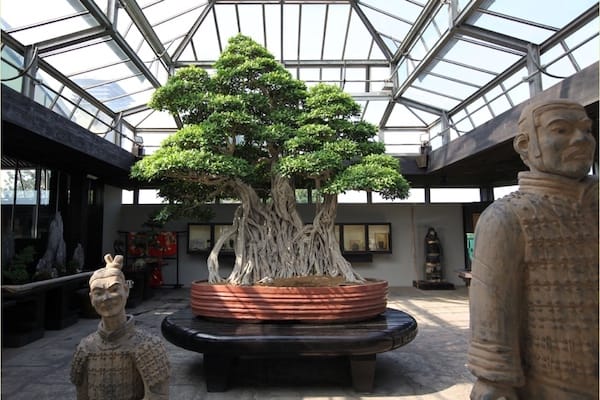
Known as the Ficusretusa Linn, this famous Bonsai tree is thought to be over 1200 years old. It can be found in the Crespi Bonsai Museum located in Parabiago, Italy positioned in a glass pagoda outside.
Originally, the tree was cared for by Chinese masters and then by Japanese master, Shotaro Kawahara.
The founder of the Crespi Bonsai Museum, Luigi Crespi, took approximately ten years to gain possession of this tree and finally succeeded in 1986. Since then, Mr. Crespi and Alberto Lavazza have continued to care for this priceless Bonsai tree.
2. Mansei-en Juniper Bonsai Tree
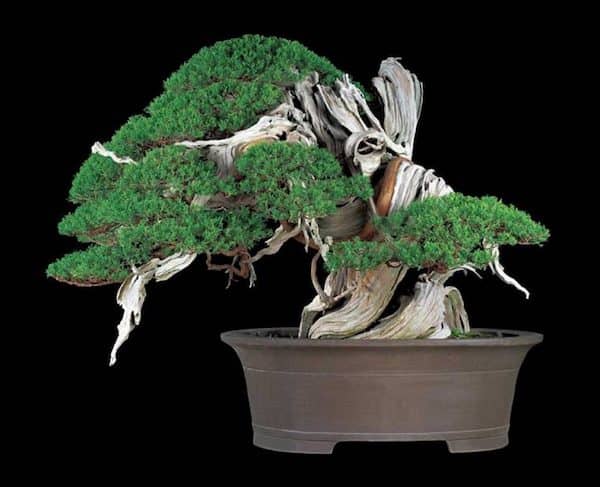
Another 1000-year-old Bonsai calls the Mansei-en Bonsai Nursery home. The Kato family owns this nursery.
This particular Juniper bonsai tree was discovered in a Japanese forest and was deemed to be more than 1000 years old.
The Mansei-en Nursery is one of six famous Bonsai gardens that are a part of the Omiya Bonsai Village also known as “The Sacred Land of Bonsai”. The Mansei-en is the oldest nursery and hosts other ancient Bonsai trees.
3. Shunka-en Bonsai Tree
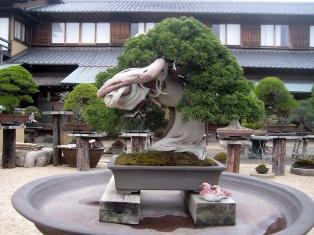
The Shunka-en Bonsai has been dated at 800+ years of age and calls Tokyo home.
It does not have a name and is part of internationally famous Bonsai Master Kunio Kobayashi’s Shunka-En Bonsai Garden and Museum. The public can admire this masterpiece at the Shunka-En in Tokyo.
4. Red Pine Bonsai Tree
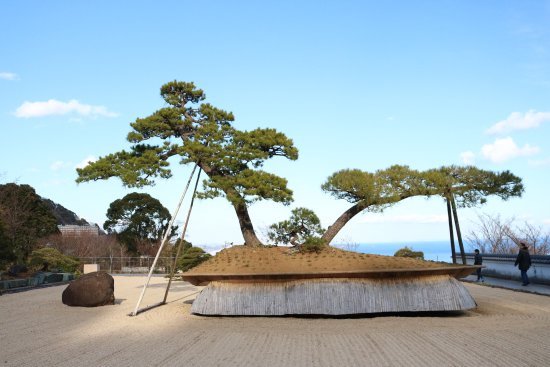
A beautiful 600 year-old Pine Bonsai located in Atami, Japan. This is one of the largest Bonsai trees in the world that finds its home in the Akao Herb and Rose Garden.
It is considered an Imperial Bonsai at sixteen feet in height and more than thirty feet in width. Most Bonsai trees are considerably smaller, so this is one gigantic bonsai.
Despite its size, it is considered a bonsai because it grows in a pot. In fact, due to its size, it requires support for one of the principal branches.
5. Sandal Shogun no Matsu Bonsai
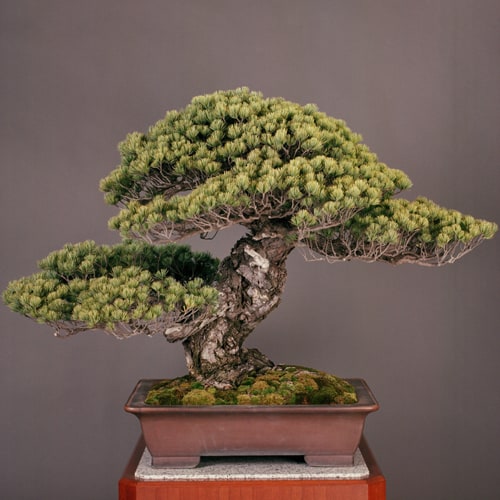
This Tokugawa five-needle Pine has belonged to Japan’s royalty for more than 500 years. It has been cared for by numerous Japanese Emperors.
This ancient tree qualifies as a giant Bonsai tree and despite its age, continues to thrive to this day in Tokyo’s Imperial Palace where it can be visited and admired.
It was planted in 1478 by Ieyasu Tokugawa, the third Shogun, and is now revered as a masterpiece.
6. Yamaki Pine Bonsai
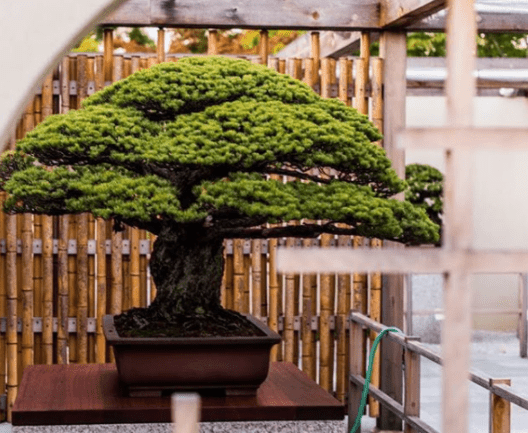
The Yamaki Pine Bonsai tree is close to 400 years old. Apart from its age, it is a miracle because it survived the Hiroshima bombing at the end of WWII.
It has been trained in the Bonsai art since 1625.
The Bonsai tree was brought to the United States in 1976 for the U.S.’s Bicentennial as a gift from the Nippon Bonsai Masaru Yamaki.
It stood near the entrance of Washington D.C.’s Bonsai and Penjing Museum for some time. It is currently the oldest Bonsai tree in Harvard’s Arnold Arboretum Museum.
7. Hinoki Cypress Bonsai
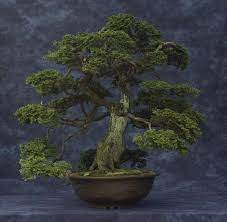
This Hinoki Cypress is approximately 300 years old and can be found in Boston, Massachusetts, USA.
It is a small Cypress Bonsai tree that has spent a couple of centuries in the same Bonsai pot. It’s now one of the oldest Bonsai trees found in the United States.
The Hinoki can be admired in Harvard University’s Arnold Arboretum and considered the jewel of the Larz Anderson Bonsai Collection housed there.
This tree is not only exceptional for age in itself, but even more so because Cypress Bonsai trees require particular care. For one to arrive at this ripe old age, it’s quite the accomplishment.
8. Chabo-Hiba Cypress Bonsais
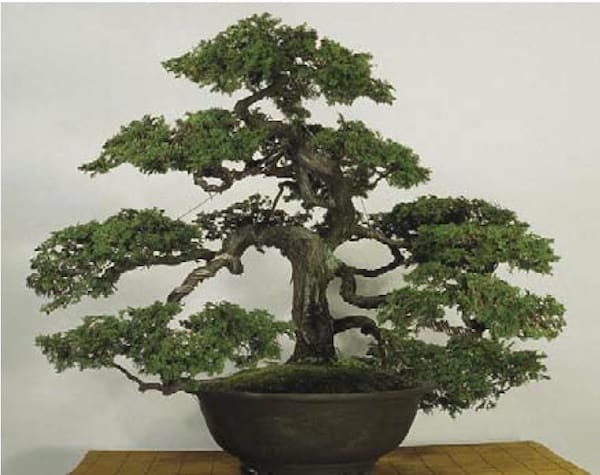
The Chabo-Hiba Cypress Bonsai tree is part of the Collection of Japanese Dwarf trees of Lars Anderson. It calls the Arnold Arboretum at Harvard University home.
Larz Anderson served as the American Ambassador to Japan and brought an impressive number of Bonsais to the United States in 1913. Upon his death, his widow, Isabel Anderson, gifted thirty of the Bonsais to the Arnold Arboretum.
The most treasured of these plants are considered to be the Chabo-Hiba Bonsai, which are Hinoki Cypresses. These bonsais range in age from 155 to 275 years old. They are among the oldest Bonsai trees located in the United States.
9. Japanese Red Pine Bonsai
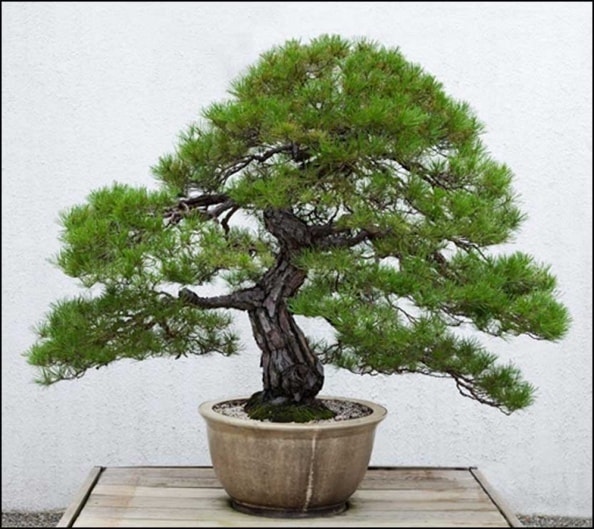
This Red Pine Bonsai is a 226-year-old Bonsai that belonged to the Imperial collection.
It has been trained since 1795 and was given as a gift by Japan’s Emperor to the United States during their Bicentennial celebrations.
10. Thorny Elaeagnus Bonsai
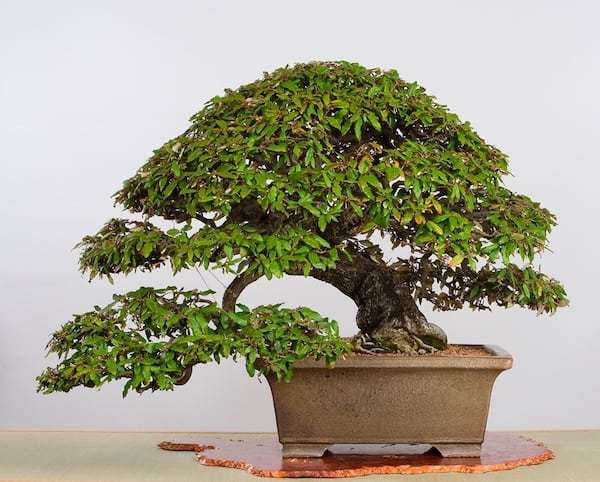
The Thorny Elaeagnus Bonsai checks in at close to two hundred years of age. This tree produces both fruit and flowers.
Begun as a cutting in 1825, it was trained from the very beginning and has always been cultivated as a Bonsai. It was a gift in 1976 from Teisuke Takahashi.
How Long Do Bonsai Trees Live?
The easiest answer would be over a thousand years, but the lifespan of a Bonsai tree will depend heavily on the care it receives. Some may think that lifespan is limited to size, but nothing could be further from the truth.
These trees can live just as long as regular-sized trees do, and often longer. The better their care, the longer they thrive and survive. The same trees found in parks, forests, and neighborhoods are also raised as Bonsai trees. Thanks to the fact that these trees receive better care, they can survive for a longer period than naturally growing trees.
The best growing conditions for the Bonsai species will make the difference. Watering, pruning, repotting, humidity, and pest control will all play a role in bonsai success.
Care for Bonsai trees includes living in perfect climate conditions, having sufficient nutrients, and not being exposed to diseases that are in the wild. As long as your Bonsai is healthy and vigorous, it can live for centuries and longer.
How Long Does It Take a Bonsai Tree to Grow?
Much will depend on what you begin with. Are you growing your tree from seed or a sapling? Or have you purchased a young tree that has been growing for a while?
It generally takes anywhere from ten to fifteen years to grow a Bonsai tree. The precise time necessary will rest on the type of tree and the environment it’s being cultivated in.
If you are growing a bonsai from seed, you should expect to wait about four years before it is grown enough for you to begin wiring and training its style.
Because Bonsai trees are genetically the same as normal-sized trees, they will require the same amount of time that a normal-sized tree needs to grow.
Some tree species may require twenty to thirty years for full growth, while faster-growing species only require ten to fifteen years. If a regular-sized tree requires fifteen years for full growth, like an elm tree, its Bonsai counterpart will require the same.
Learn more about How Bonsai Tree Sizes Are Categorized.
The same elements necessary for tree growth will affect your Bonsai:
- Environment
- Nutrients
- Pruning
- Sunlight
- Water
Read more in this in-depth article on How Long it Takes to Grow Bonsai Trees.
Oldest Bonsai Trees Final Thoughts
There are many different types of Bonsai trees out there. They come in various sizes, shapes, colors, and styles. Each one has its own unique characteristics and benefits.
Whatever species you finally decide upon, cultivate your bonsai tree by trying to match the environmental conditions of a full-grown tree of the same species in nature. This will give your bonsai the best chance of thriving for a long time.
Bonsai trees are beautiful additions to any home, lasting for many years to come.
Here are other good, related articles to check out:


